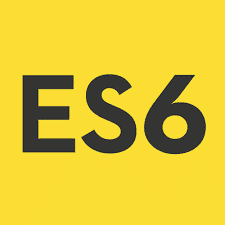Use these to jump around or read it all
What You’ve Learned
Your Assignment

So… now what?
Andree has been teaching JavaScript for years. She is mainly responsible for the outline of these primers. It is her belief that you have 90% of the tools you’ll ever need to write new JavaScripts by yourself. There are other commands, yes, but the commands you
have been shown here make up the true workhorses of JavaScript.
I suggest now that you purchase a reference book. I said reference book. If you have faithfully covered the primers and actually attempted to do the assignments, without just quickly looking and going on, then you don’t need another instruction booklet. What you need is a quick reference guide to all the commands. Might I suggest JavaScript Goodies?
I also suggest that you do not allow your skills to be forgotten. Go to the JavaScripting tutorials and look over a few scripts. I’m sure you’ll see some of the smaller scripts and think how they can be bettered by adding a prompt, or getting the results to post in a different page. Good. Do it. Alter the script. Show how you’ve altered the script and made it a little bit better. I think it’s flattering when someone thinks enough of my work to use it as a base for their learning process.
I’ll bet what was once pure chicken scratch is now a language that you can read, or at least stumble through with the aid of a reference book or these primers.
The first questions I know I’ll receive from the primers is when will I be putting up more advanced tutorials. The answer… not any time soon. The reason is because I don’t believe you need them.
I’ve been a teacher now for many years (since 1992). If there is one thing I have learned, it’s this: There has to come a point where the student is left alone to face a baptism of fire.
I teach radio and television. I know the students would be most happy if I was standing behind them during every step of the process just waiting to push the right button when they were about to make a mistake (no one wants to look bad in front of their fellow classmates), but I can’t do that. There has to come a time when I step out of the room, shut the door, and they are left to either succeed or fail. The overwhelming majority succeed.
If Andree and I keep writing more and more JavaScript primers, then it’s possible you’ll only learn what we teach you. That’s not good. You need to go off by yourself, close the door behind you, and bully through writing your own first JavaScript.
You’ll get errors galore. You’ll curse. You’ll probably curse Andree and me. But you know what? After all the kicking and screaming, you’ll get it to work. Then these primers will be only a help desk rather than the end-all.
Remember what I tried to beat into your head in the early primers: JavaScript is linear. JavaScript is logical. This happens before that, and this before that.
When you attempt your first JavaScript, write out, in plain English, what you want to happen. Decide what must happen first, second, third, etc. Then figure out what would be the best method for creating those events. Put them all together and you just may have a pretty darn good JavaScript.
Thank you for reading these Primers. It took Andree and I a solid two months to conceive and write them. I can tell you, she wrote most of the harder JavaScripts, I wrote the easier ones toward the beginning. It was a joy working with her and I hope you’ll let her know what you thought of the Primers. She’d like to know.
You’ve graduated! Throw your hat into the air.
What You Have Learned
Here’s that button one last time with a list of every item Andree and I covered in this JavaScript Primer series.
Your Assignment
Your assignment is a simple one — on the surface at least. At this point you should be able to create and write your own JavaScript program. Stop and think about what would be a good addition to your page. Then build it.
What You’ve Learned
Your Assignment 








